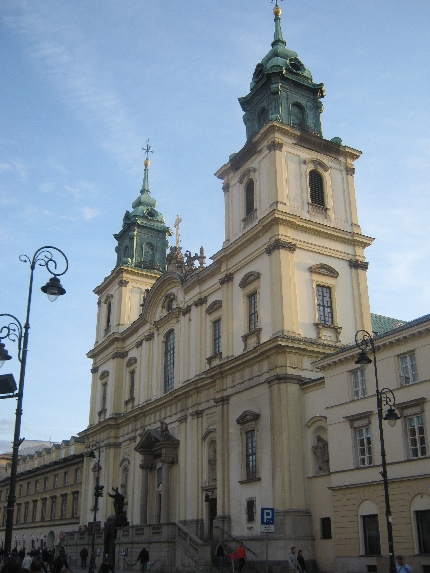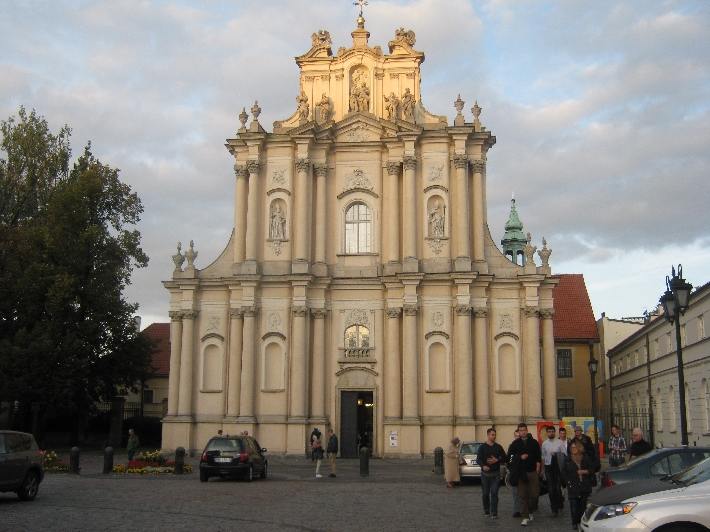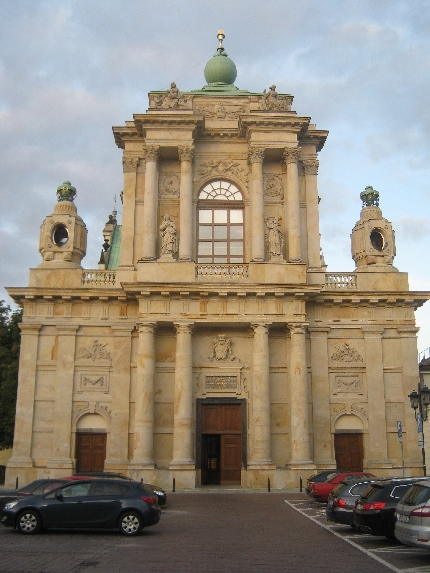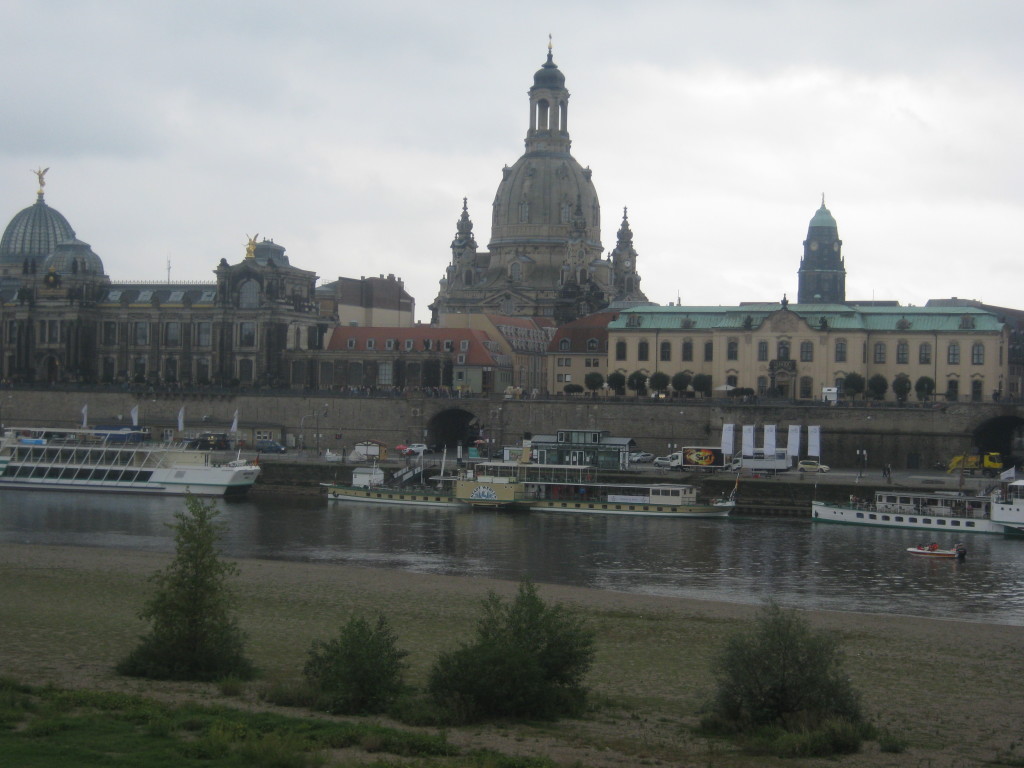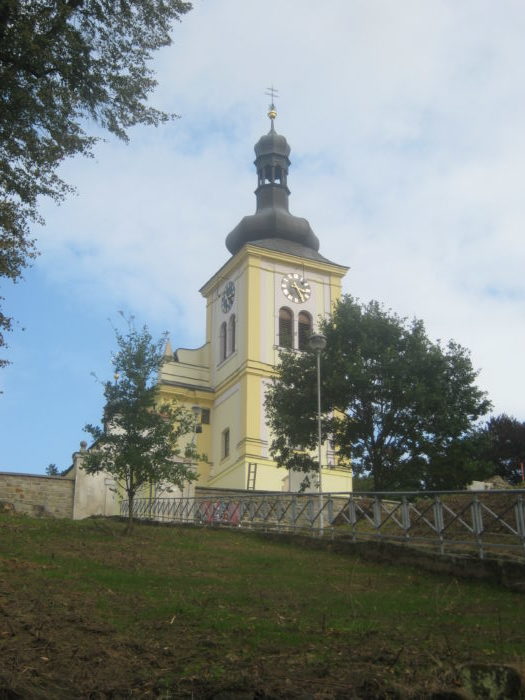
Today saw the reconsecration of Kostel sv Martina/St Martin’s Church in the nearby village of Markvartice. For the somewhat irreligious Czech Republic, renovating an abandoned Church building and bringing it back into liturgical use, is quite an event.
Whilst there has been a Church on the current site since the thirteenth century, the building in its present baroque appearance, dates from a rebuilding between 1701-04. It started falling into disrepair following the end of the Second World War, a result of the expulsion of the majority Sudetendeutsche population in 1945-6 and the communist takeover of power in Czechoslovakia, shortly afterwards.
The Church was last used for liturgical worship in 1966. By the late 1980s, all that was left standing were the perimeter walls – all of the roof had collapsed. Apparently, in 1989, the communist authorities issued an order for the demolition of the building, but fortunately, the Velvet Revolution took place before the order could be carried out.
Work to restore the Church began fifteen years ago, in 2002. Whilst funds to carry out the restoration have been raised locally, considerable finance has come from various German Roman Catholic dioceses. There has also been financial support from the regional government and from the Czech Ministry of Culture. This governmental support whilst welcome, is more about preserving what is seen as the country’s cultural and architectural heritage, rather than directly supporting the Roman Catholic Church.
Markvartice is about eight kilometres by road from Stará Oleška. Earlier this week, after I first read about today’s reconsecration, I drove across there to visit the Church. Last minute work to get everything ready for today’s celebrations, was taking place, but I was able to explore and take the photographs that follow.
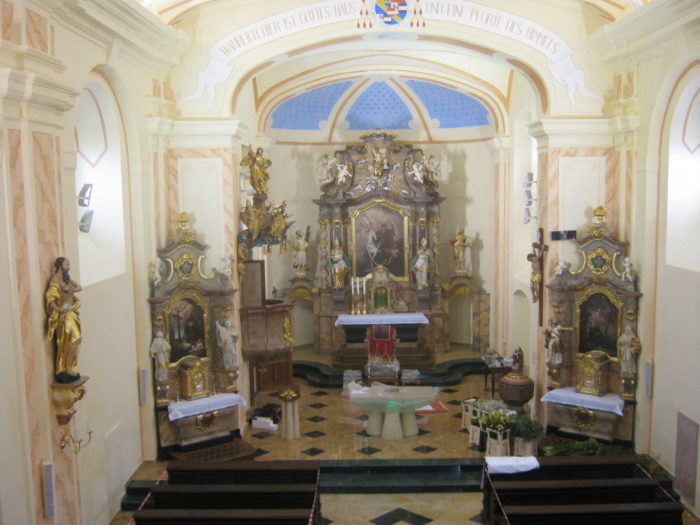
As you can see, the very baroque interior has been completely restored to a very high standard and a modern forward altar and lectern installed. One rather ‘interesting’ feature is the coloured light under the front of the new altar. It changes between the different liturgical colours, avoiding the need for different coloured altar frontals 🙂
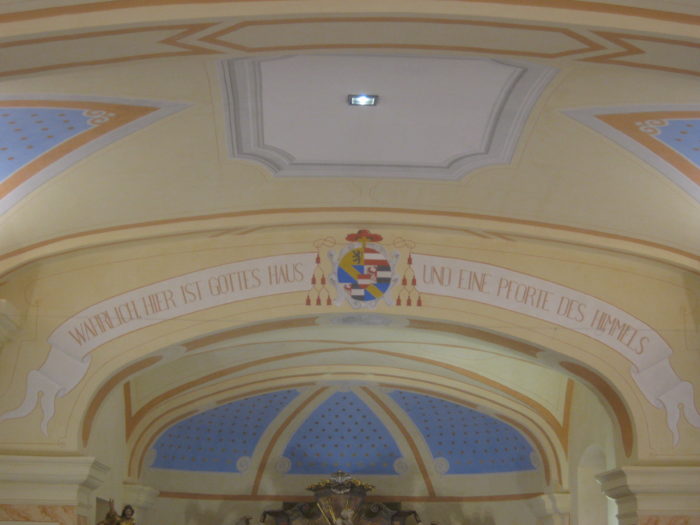
The inscription above the chancel arch clearly reflects the fact that German was the language of the majority population at the beginning of the eighteenth century until 1945.
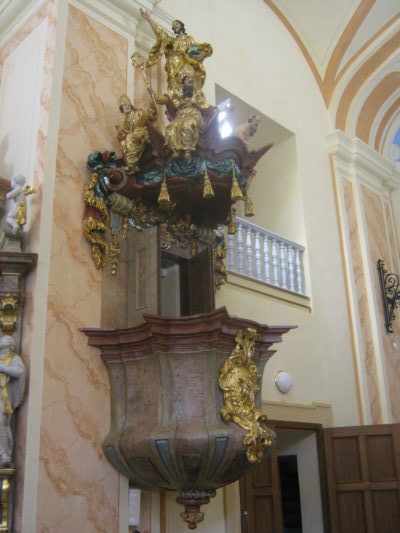
A rather elaborate pulpit from which to preach 🙂
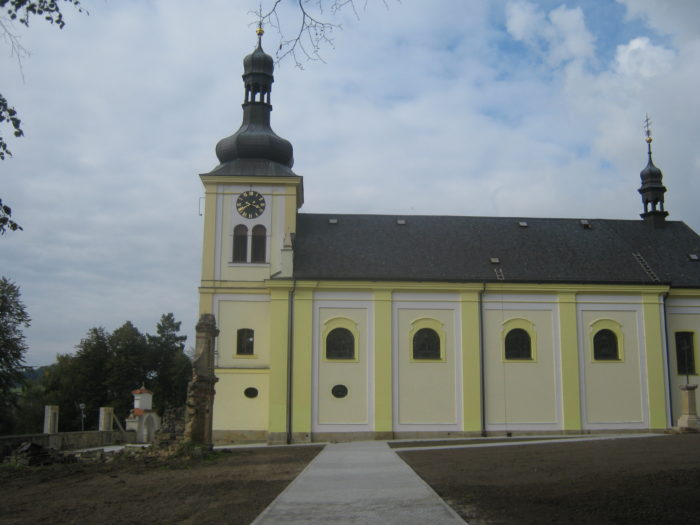
The churchyard on the north side of the Church, has been almost completely cleared with the damaged remains of memorials, moved and placed alongside the boundary wall.
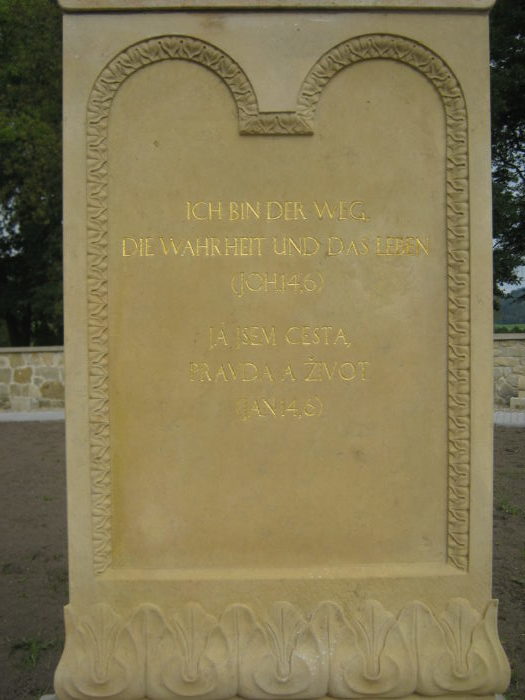
However, this memorial, with its bilingual inscription underneath a large cross, has been renovated and preserved. It is also an example of how much longer it takes to say something in German than in most other languages 🙂
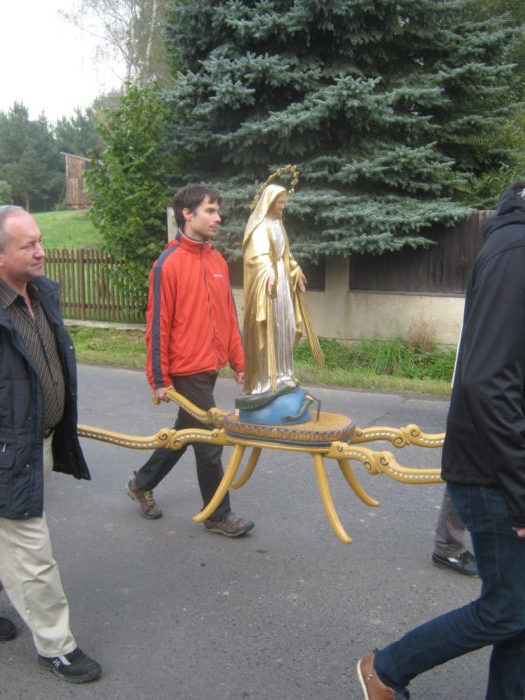
Today’s celebrations began with this statue of the Virgin Mary being carried in procession through the village. The procession started at the railway station, located at the southern end of the village, and proceeded to the Church, located at the northern end.
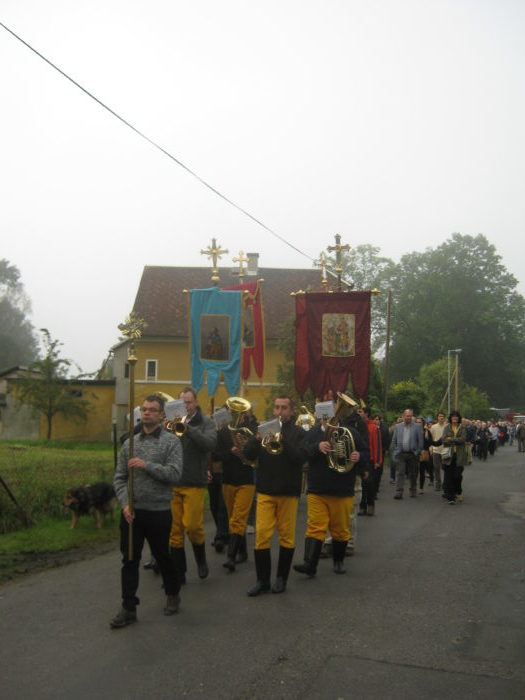
At the head of the procession, along with a processional cross and four banners, was a small brass band who I’m almost certain had travelled from Germany. There was quite a German presence with many German registered cars parked in the various temporary car parks that had been set up.
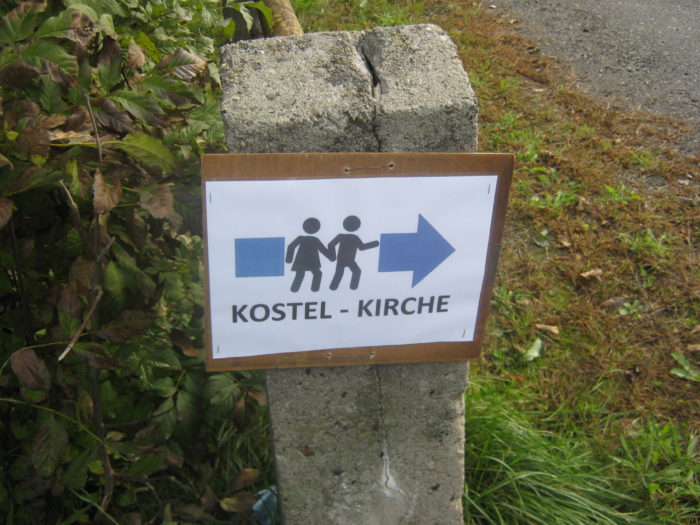
Hence this bilingual sign! There were also coaches which had brought people from elsewhere in the Czech Republic, particularly from Moravia which is the more Roman Catholic end of the country. Therefore whilst the Church was packed for the 11.00 mass of reconsecration, I do wonder how well attended it will be by local people, Sunday by Sunday, once all the visitors have left.



